
Fundamentals
The Collective Identity, at its elemental core, represents a shared understanding of self that extends beyond the individual, finding its grounding within a community. It is a deep, communal sense of belonging, a recognition of commonalities in heritage, experiences, and aspirations that bind a group together. This concept is not merely a label; rather, it is a living, breathing force, shaped by the interactions of individuals and their relationships with broader social structures.
For Roothea, this understanding begins with the very strands that crown our heads, recognizing textured hair as a powerful, ancient conduit for this shared sense of self. The coils, kinks, and waves of Black and mixed-race hair have, through millennia, served as visible declarations of lineage, societal role, and spiritual connection.
From the earliest ancestral hearths, hair has been a canvas upon which collective stories were inscribed. Before written words, before formalized creeds, the way one’s hair was cared for and styled spoke volumes about one’s place within the community, one’s life stage, and even one’s spiritual alignment. These practices were not solitary acts but communal rituals, passed down through the gentle touch of generations. The very act of grooming became a shared language, fostering bonds and reinforcing a collective memory.
The Collective Identity finds its most profound expression within communities bound by shared heritage, with textured hair serving as a tangible, living testament to ancestral connections.
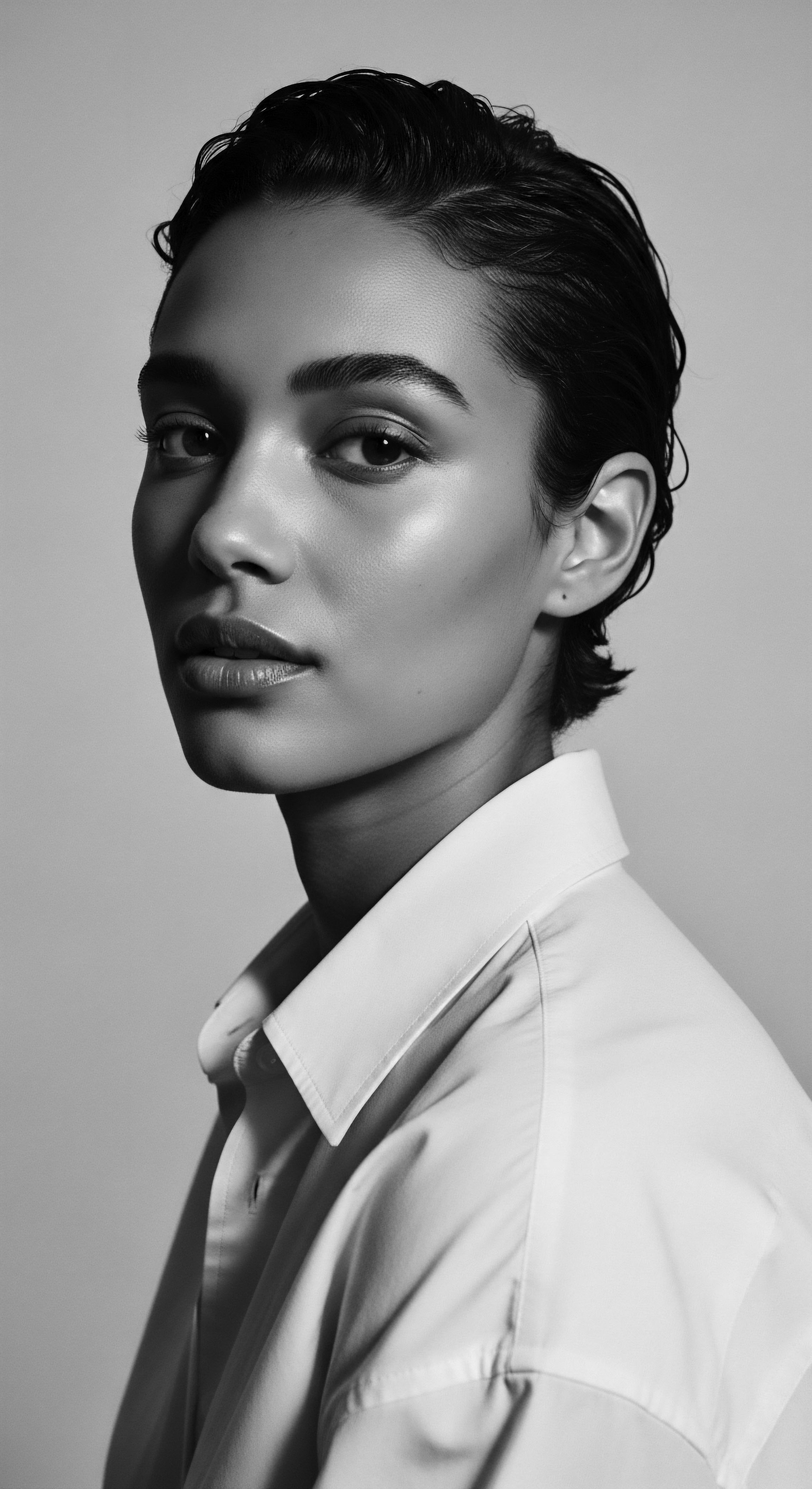
Hair as a Communal Thread ❉ Echoes from the Source
In many pre-colonial African societies, hair was intrinsically linked to a person’s identity and social standing. The intricate patterns of braids, the careful sculpting of locs, or the adornment with shells and beads were not random choices. Instead, they conveyed a wealth of information ❉ a person’s age, marital status, wealth, ethnic identity, or even their role in a community ritual. These visual cues allowed for immediate recognition and understanding within a collective.
The very act of communal hair care, often performed by elders, served as a conduit for transmitting cultural knowledge and values. It was during these moments of shared intimacy that stories were told, wisdom imparted, and the threads of collective belonging were strengthened.
Consider the Yoruba People of Nigeria, where hair held a sacred meaning, believed to be a medium of spiritual energy connecting individuals to their ancestors and deities. Hairstyles like “Irun Kiko,” a form of thread-wrapping, carried specific connotations related to femininity, marriage, and coming-of-age rites. Young women would wear elaborate braids during initiation ceremonies, marking their transition into adulthood, a visible sign to the entire collective of their new status.
Similarly, among the Himba Tribe in Namibia, dreadlocked styles coated with red ochre paste symbolized their connection to the earth and their ancestors, with specific styles indicating life status and passage through stages of life. These practices illustrate how deeply hair was, and remains, intertwined with a shared sense of self and community purpose.
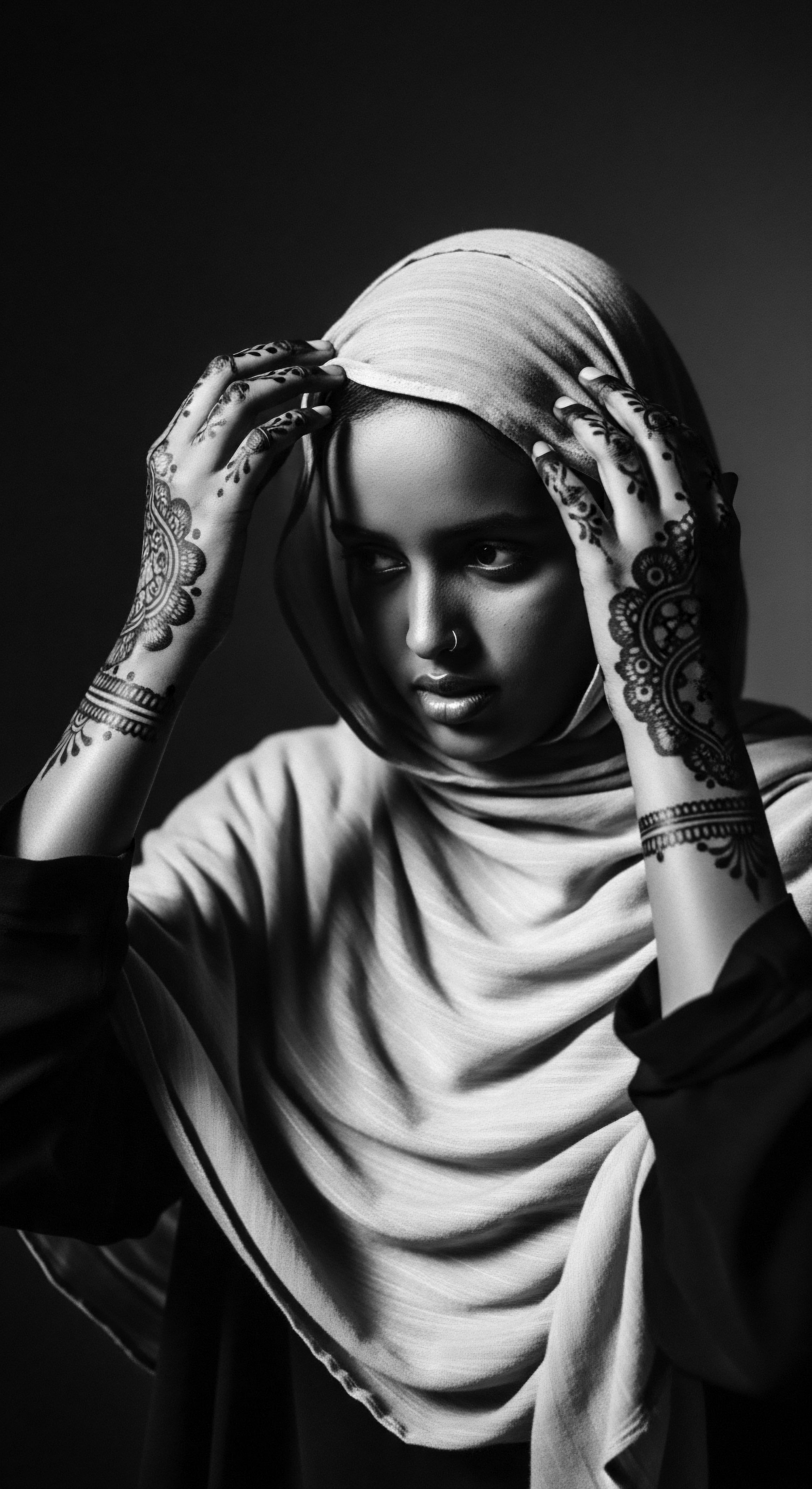
Early Expressions of Shared Hairways
The origins of textured hair care are rooted in elemental biology and ancient practices, a profound dialogue between human ingenuity and the natural world. Our ancestors possessed an intimate knowledge of botanicals and natural resources, understanding how to cleanse, nourish, and protect hair with ingredients directly from the earth. This knowledge was not individualistic; it was a communal inheritance, shared and refined over countless generations. The wisdom surrounding the properties of specific plants, the methods of preparing oils and butters, and the techniques for crafting protective styles formed a collective body of understanding.
This shared wisdom was often codified through practices that became communal rituals. For instance, the use of Black Soap for shampooing was widespread in West and Central African nations, a testament to a collective understanding of its cleansing properties. Similarly, the application of natural oils and butters, such as shea butter and castor oil, for moisture and scalp health, represents a lineage of care that transcended individual preference, becoming a communal standard for well-being. These traditions speak to a foundational aspect of Collective Identity ❉ the shared adoption of practices that benefit the whole, ensuring the health and vibrancy of hair that was, and is, a communal asset.
- Ceremonial Grooming ❉ Hair care rituals often accompanied significant life events, marking rites of passage and reinforcing communal bonds.
- Botanical Knowledge ❉ Ancestral communities shared knowledge of indigenous plants and their properties for hair health, such as oils and herbs.
- Communal Braiding ❉ The act of braiding hair was frequently a social event, strengthening ties and transmitting cultural narratives through shared activity.
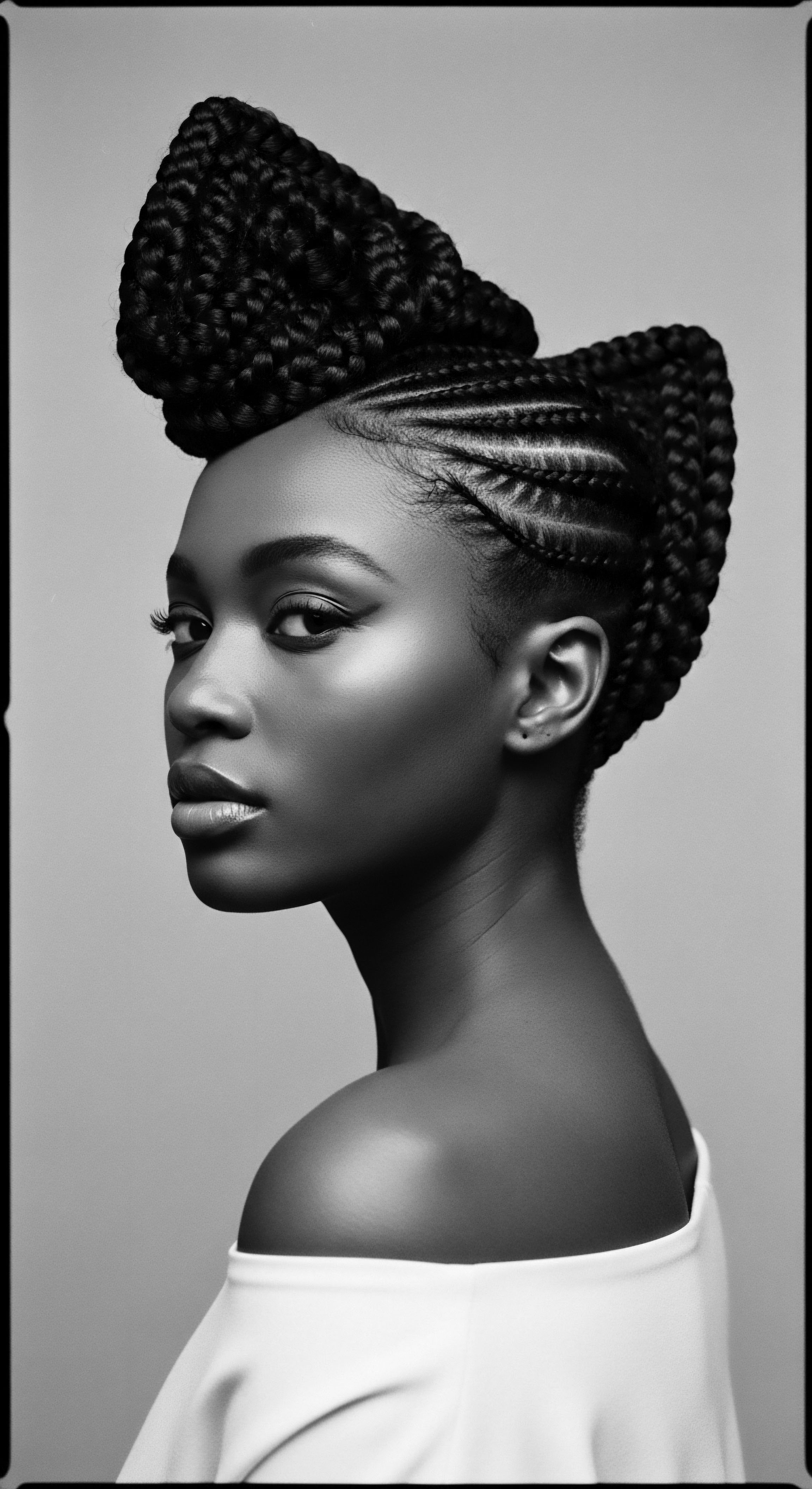
Intermediate
Moving beyond the foundational understanding, the Collective Identity, particularly in the context of textured hair, begins to reveal its deeper layers as a dynamic process. It is not a static state but a continuous negotiation, a shared definition that individuals within a group construct and reaffirm through their interactions, practices, and outward expressions. For communities with textured hair, this process has been profoundly shaped by historical forces, societal pressures, and acts of resilience, transforming hair from a mere biological attribute into a potent symbol of shared history, ongoing struggle, and enduring pride. The meaning of Collective Identity, therefore, becomes inextricably linked to the journey of textured hair through time and across continents.
The transatlantic slave trade stands as a stark historical instance where the deliberate dismantling of Collective Identity was attempted through the brutal severance of hair-related practices. Enslaved Africans were often forced to shave their heads upon arrival in the Americas, a dehumanizing act designed to strip them of their identity, sever their connections to home countries and tribes, and reduce them to commodities. This violent imposition sought to erase the visible markers of their collective self, yet, even in the face of such oppression, the inherent meaning of hair as a cultural touchstone persisted.
The enduring legacy of ancestral hair practices demonstrates a profound collective resilience, transforming symbols of oppression into expressions of self-determination.

The Tender Thread ❉ Living Traditions of Care and Community
Despite systematic efforts to dismantle cultural ties, African people and their descendants maintained a strong connection to their heritage through hair, which became a silent yet powerful expression of identity in a foreign land. The ingenuity of enslaved individuals transformed cornrows into covert maps for escape, weaving intricate designs that indicated routes and safe houses, a testament to the enduring collective spirit and a refusal to be entirely stripped of their communal bonds. This historical example powerfully illuminates the Collective Identity’s connection to ancestral practices, showcasing how shared hairways became a vehicle for survival and resistance.
The tradition of communal hair care, though altered by the harsh realities of slavery, continued to provide moments of solace and connection. Mothers, grandmothers, and aunties passed down techniques for cleansing, moisturizing, and styling, often using whatever natural ingredients were available, such as cooking oils or animal fats, in the absence of traditional botanicals. These acts, though seemingly mundane, were profoundly significant.
They were moments of shared intimacy, storytelling, and the quiet reaffirmation of a shared heritage, forging new forms of collective belonging in a challenging environment. The generational ritual of hair care became a bedrock of communal life, preserving not just physical hair, but also cultural continuity and personal history.
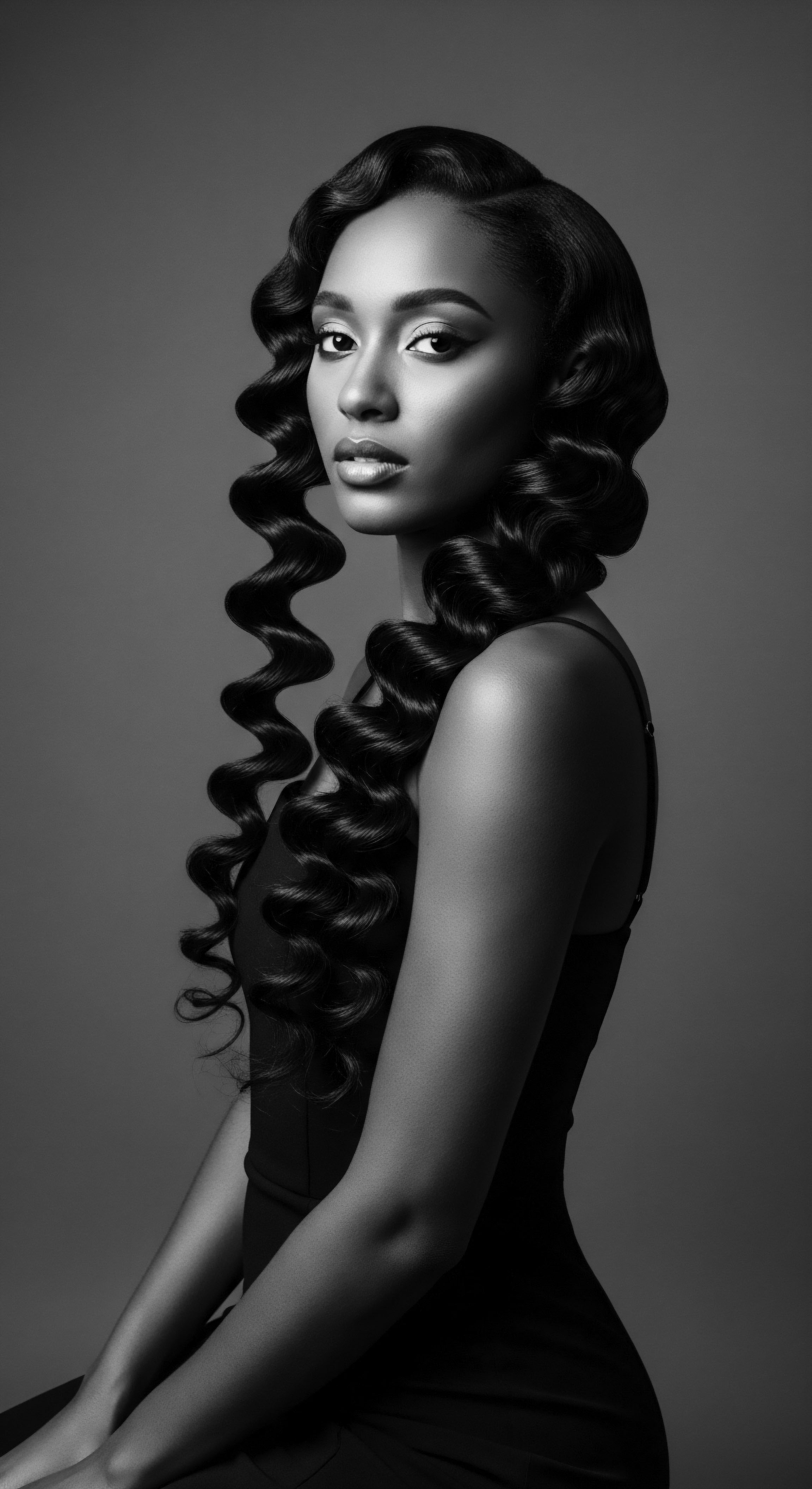
Hair as a Symbol of Resistance and Pride
The mid-20th century witnessed a resurgence of the Collective Identity through the natural hair movement, a powerful response to Eurocentric beauty norms that had long dominated societal perceptions. During the Civil Rights Movement in the United States, the Afro Hairstyle emerged as a symbol of Black pride and unity, a direct challenge to the notion that straightened hair was the only acceptable standard of beauty. Figures like Angela Davis popularized the Afro as a political statement, linking it to the Civil Rights Movement and glorifying the Black aesthetic. This period marked a deliberate, collective reclaiming of textured hair as a visible declaration of racial pride and a counter-hegemonic movement.
This collective shift was not without its internal complexities. Older generations, who had navigated a society that often penalized natural hair, sometimes viewed the Afro with apprehension, reflecting the internal divisions and negotiations inherent in the formation of a collective identity. Yet, the overall movement demonstrated a profound shift in the shared understanding of beauty and self-worth within the Black community. The natural hair movement, which gained renewed momentum in the late 2000s, continues this legacy, encouraging individuals to embrace their natural textures and connecting them to a lineage of resilience and self-acceptance.
| Era/Context Pre-Colonial Africa |
| Hair Practice/Style Intricate braids, locs, adorned styles |
| Collective Meaning/Significance Indicated social status, age, marital status, spiritual beliefs, tribal affiliation. |
| Era/Context Transatlantic Slave Trade |
| Hair Practice/Style Cornrows as coded maps |
| Collective Meaning/Significance Covert communication, resistance, communal solidarity, preservation of knowledge. |
| Era/Context Civil Rights Movement (1960s-70s) |
| Hair Practice/Style The Afro |
| Collective Meaning/Significance Symbol of Black pride, unity, political statement, rejection of Eurocentric beauty standards. |
| Era/Context Contemporary Natural Hair Movement |
| Hair Practice/Style Afros, locs, braids, twists |
| Collective Meaning/Significance Self-acceptance, connection to ancestral roots, challenging discrimination, celebration of diversity. |
| Era/Context Hair has consistently served as a powerful medium for collective expression, adapting to circumstances while retaining its core significance. |
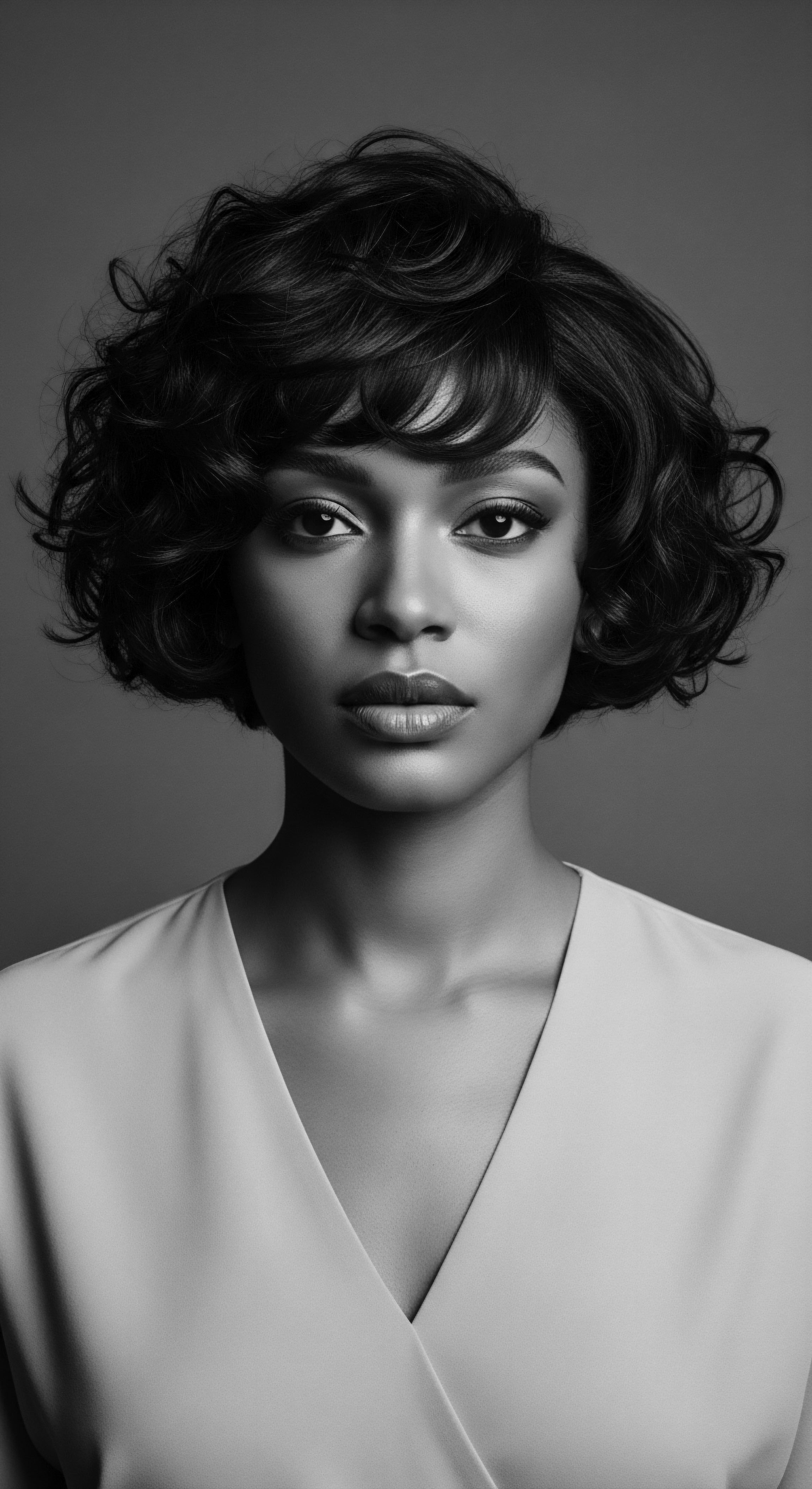
Academic
The Collective Identity, from an academic vantage point, is not a simple summation of individual identities but a dynamic, interactive, and shared definition forged through ongoing social processes. It represents a “shared sense of ‘one-ness’ or ‘we-ness’” anchored in real or imagined common attributes and experiences among those who constitute the collectivity. This concept extends beyond mere recognition; it encompasses a corresponding sense of Collective Agency, which is the action component that suggests and even invites collective action in pursuit of shared interests. Within the nuanced context of textured hair heritage, this academic interpretation provides a framework for understanding how shared hair experiences have not only shaped group affiliation but also catalyzed social movements and redefined cultural norms.
The meaning of Collective Identity, when viewed through the lens of Black and mixed-race hair experiences, reveals a profound interplay between historical trauma, cultural preservation, and ongoing liberation. It is a conceptual construct that helps us dissect how communities respond to external pressures, internalize shared narratives, and mobilize around visible symbols of their shared existence. The transformation of perceptions around textured hair, from a stigmatized feature to a celebrated marker of heritage, offers a compelling case study in the active construction and evolution of a collective identity. This transformation is not merely aesthetic; it is deeply socio-political, psychological, and economic, reflecting a community’s ability to redefine itself against dominant societal narratives.
Collective Identity in textured hair communities manifests as a powerful, evolving construct, bridging ancestral wisdom with contemporary expressions of shared selfhood and agency.
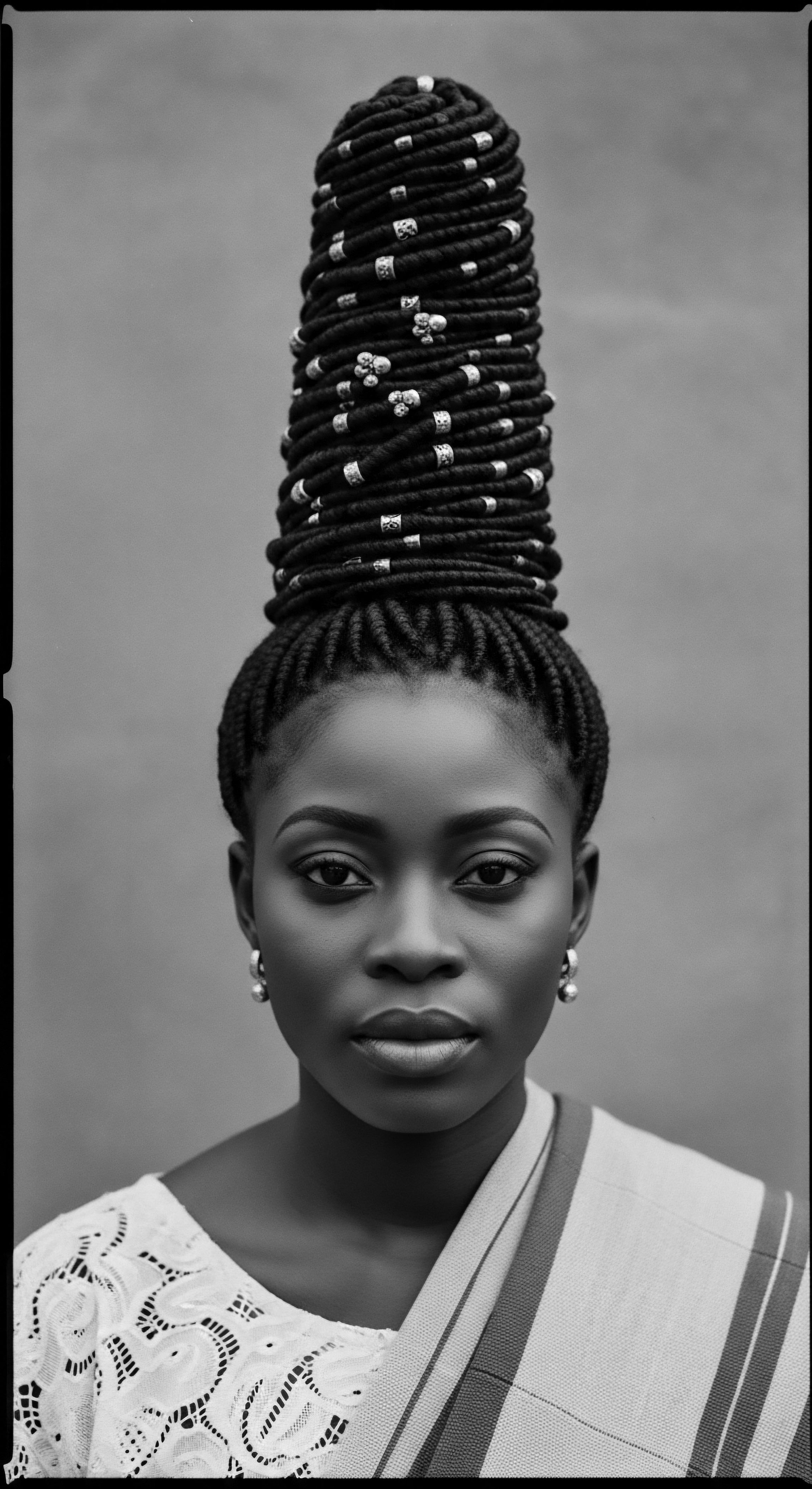
The Unbound Helix ❉ Voicing Identity and Shaping Futures
The historical subjugation of textured hair, particularly during the transatlantic slave trade and subsequent eras of racial discrimination, directly targeted the Collective Identity of African peoples. The forced shaving of heads and the imposition of Eurocentric beauty standards were deliberate strategies to dismantle existing communal structures and individual self-perception. This systematic assault on hair was an assault on the collective psyche, aiming to erase the visible connections to ancestral lands and traditions. Yet, the resilience of Black and mixed-race communities led to the clandestine preservation and eventual resurgence of hair practices, transforming them into potent symbols of resistance and cultural survival.
The modern natural hair movement, for instance, serves as a powerful illustration of how Collective Identity is actively constructed and asserted. It is not merely a trend but a profound socio-cultural phenomenon rooted in a collective desire for self-acceptance and a reclamation of heritage. This movement challenges deeply ingrained beauty standards and combats hair discrimination, which has historically limited educational and professional opportunities for individuals with textured hair. The passage of legislation like the CROWN Act (Creating a Respectful and Open World for Natural Hair) in various U.S.
states directly addresses this historical discrimination, legally prohibiting bias based on hair texture and styles associated with racial identity. This legislative action represents a collective victory, a formal recognition of the right to express one’s identity through hair without fear of prejudice. The CROWN Act, first passed in California in 2019, has gained traction in numerous states and is inspiring similar legislation globally, marking a significant shift in societal acceptance and legal protection for textured hair, underscoring the power of collective advocacy.

Interconnected Incidences and Long-Term Consequences
The academic understanding of Collective Identity in this context extends to its long-term psychological and sociological consequences. When individuals within a collective are repeatedly subjected to negative societal perceptions regarding a core aspect of their identity, such as hair, it can lead to internalized stigma and psychological distress. Conversely, the collective affirmation of textured hair, through movements and legislative victories, contributes to enhanced self-esteem, communal solidarity, and a stronger sense of belonging. The communal grooming practices, passed down through generations, are not merely aesthetic routines; they are profound acts of cultural transmission and psychological sustenance, reinforcing the shared understanding of beauty and worth within the collective.
Research in social psychology and cultural studies often examines how collective identity is expressed through Cultural Materials or Artifacts such as names, symbols, narrative styles, practices, and rituals. In the case of textured hair, hairstyles themselves become these artifacts, carrying layered meanings that transcend individual preference. The adoption of styles like locs, braids, or Afros, particularly in spaces where they were historically deemed unprofessional or “unacceptable,” becomes an act of collective defiance and a statement of cultural pride. This assertion of identity contributes to a broader cultural shift, where diverse hair textures are celebrated, fostering a more inclusive approach to beauty standards globally.
The dynamic nature of Collective Identity also implies its capacity for evolution. While rooted in historical practices, the contemporary natural hair movement demonstrates how traditional styles are reimagined for the modern era, creating a fusion of ancestral techniques with contemporary aesthetics. This evolution is not a dilution of heritage but an expansion, a continuous dialogue between past wisdom and present expression. The shared journey of textured hair, therefore, is a living testament to the enduring strength of Collective Identity, illustrating how communities adapt, resist, and redefine their shared selfhood across generations.
- Identity Formation ❉ Collective Identity shapes individual self-perception, especially in groups with shared phenotypic traits like textured hair, influencing self-acceptance and empowerment.
- Social Cohesion ❉ Shared hair practices and rituals reinforce social ties, creating a sense of community, trust, and belonging among members.
- Cultural Transmission ❉ Hair care traditions serve as a vehicle for passing down ancestral knowledge, stories, and values across generations.
- Political Expression ❉ Hairstyles become potent symbols in social movements, expressing resistance to dominant norms and asserting collective rights, as seen with the CROWN Act.

Reflection on the Heritage of Collective Identity
As we consider the profound meaning of Collective Identity through the lens of textured hair, a powerful truth emerges ❉ our strands are not merely physical attributes but living archives, holding the echoes of generations. This journey from elemental biology to the unbound helix of future possibilities reveals a continuous, sacred thread of heritage. The wisdom passed down through hands that braided and nourished, the stories whispered during communal grooming, the resilience woven into every coil—these are the indelible marks of a shared past that continues to shape our present and guide our future.
The ‘Soul of a Strand’ ethos reminds us that hair care is, at its heart, an act of reverence. It is a mindful connection to the ancestors who navigated immense challenges, yet preserved the essence of their identity through their hair. Every choice we make about our hair, from the ingredients we select to the styles we wear, carries the weight and beauty of this lineage. It is a quiet affirmation of belonging, a conscious decision to honor the collective journey that brought us to this moment.
This understanding of Collective Identity calls us to recognize the deep spiritual and cultural significance embedded in our hair. It invites a thoughtful consideration of how our individual hair stories intertwine with the grand, ongoing narrative of Black and mixed-race hair experiences. In this living library of Roothea, each strand contributes to a greater understanding, celebrating the beauty, strength, and enduring spirit of a heritage that refuses to be silenced, forever writing new chapters of self-definition and communal triumph.
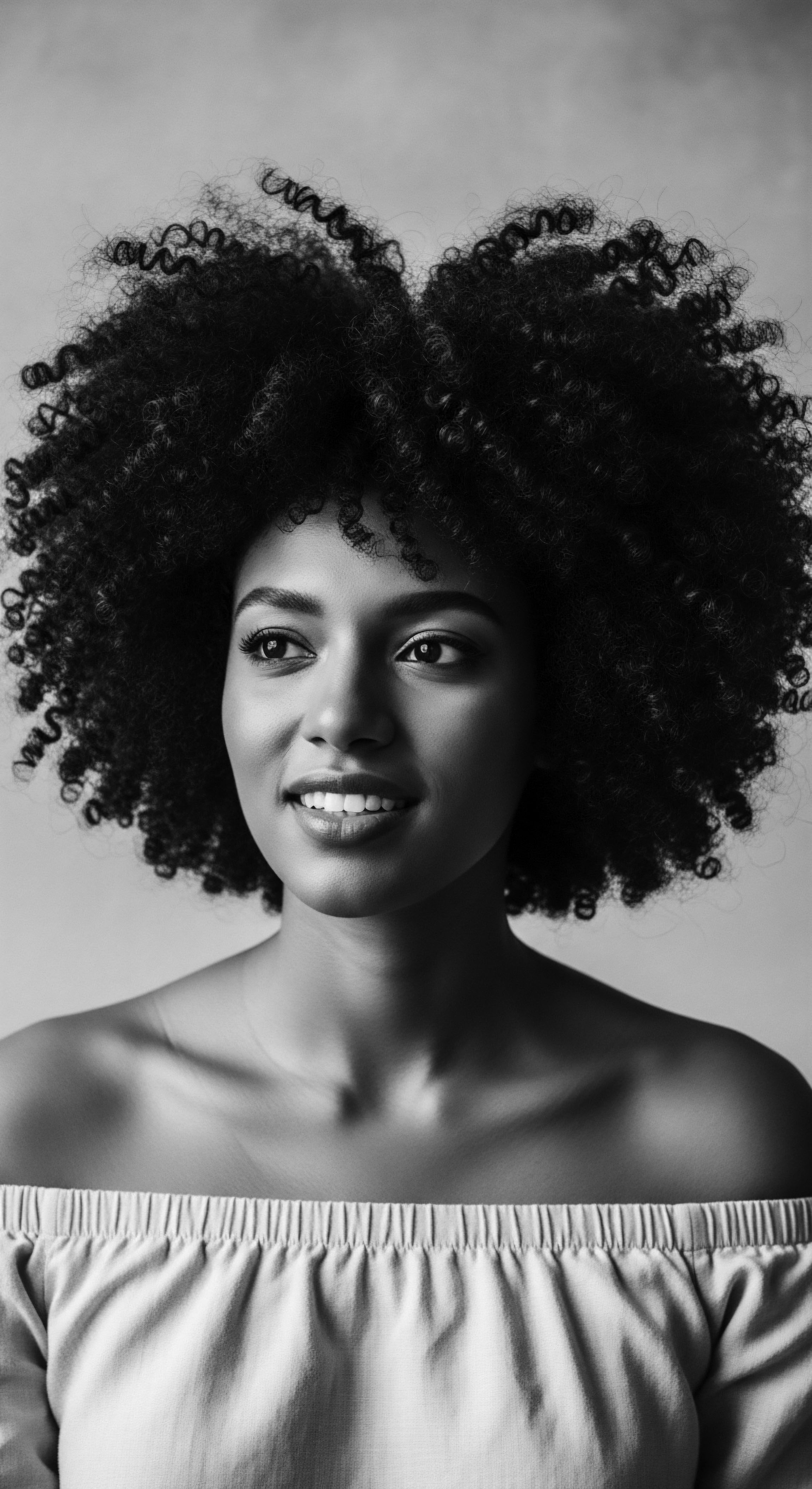
References
- Byrd, A. D. & Tharps, L. (2001). Hair Story ❉ Untangling the Roots of Black Hair in America. St. Martin’s Press.
- Cornell, S. & Hartmann, D. (1998). Ethnicity and Race ❉ Making Identities in a Changing World. Pine Forge Press.
- Johnson, D. & Bankhead, T. (2014). Hair Story ❉ The Cultural Politics of Black Women’s Hair. University of Arkansas Press.
- Melucci, A. (1989). Nomads of the Present ❉ Social Movements and Individual Needs in Contemporary Society. Temple University Press.
- Nagel, J. (1997). American Indian Ethnic Renewal ❉ Red Power and the Resurgence of Identity and Culture. Oxford University Press.
- Polletta, F. & Jasper, J. M. (2001). Collective Identity and Social Movements. Annual Review of Sociology, 27, 283-305.
- Taylor, V. & Whittier, N. (1992). Collective Identity in Social Movement Communities ❉ Lesbian Feminist Mobilization. In A. D. Morris & C. M. Mueller (Eds.), Frontiers in Social Movement Theory (pp. 104-129). Yale University Press.
